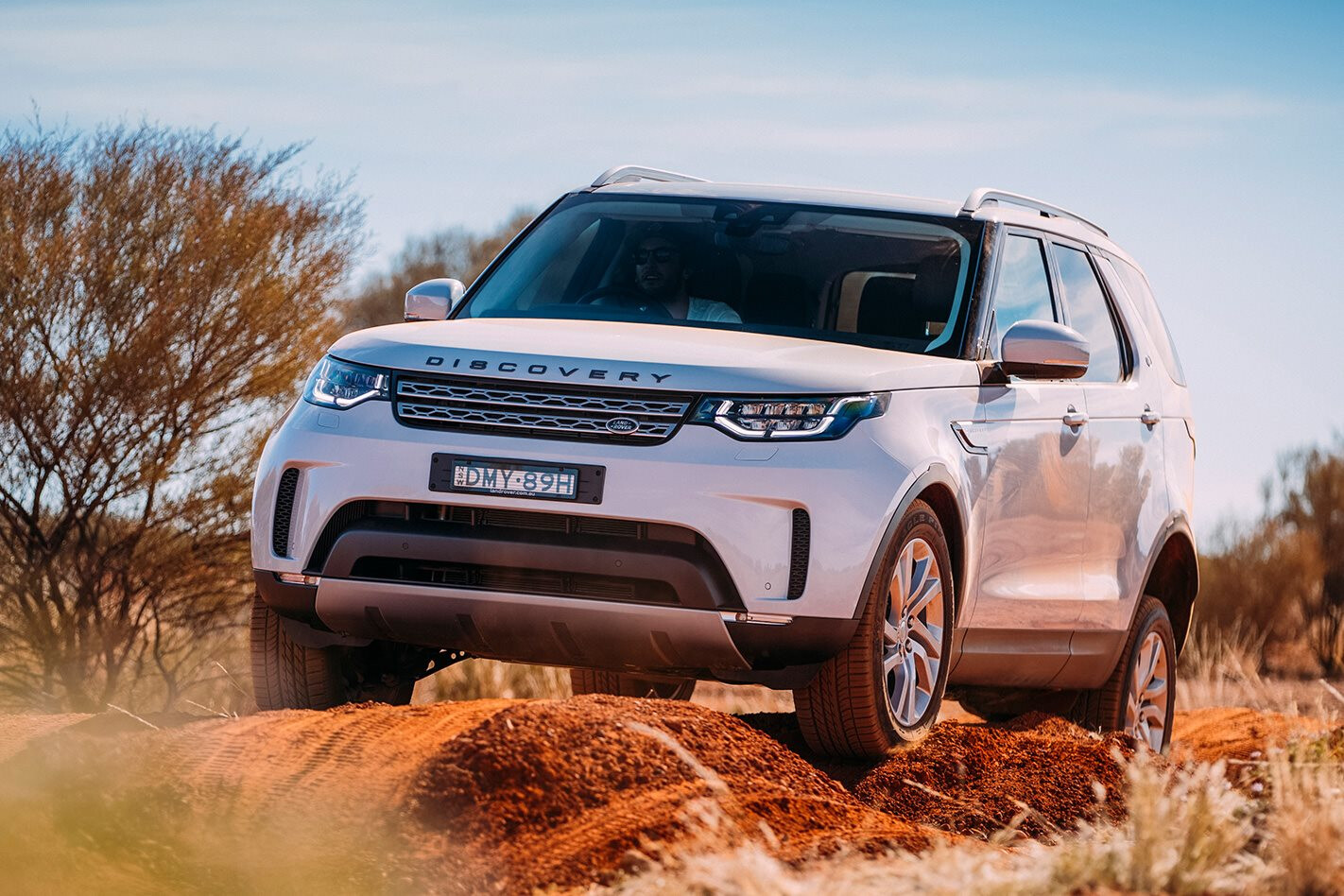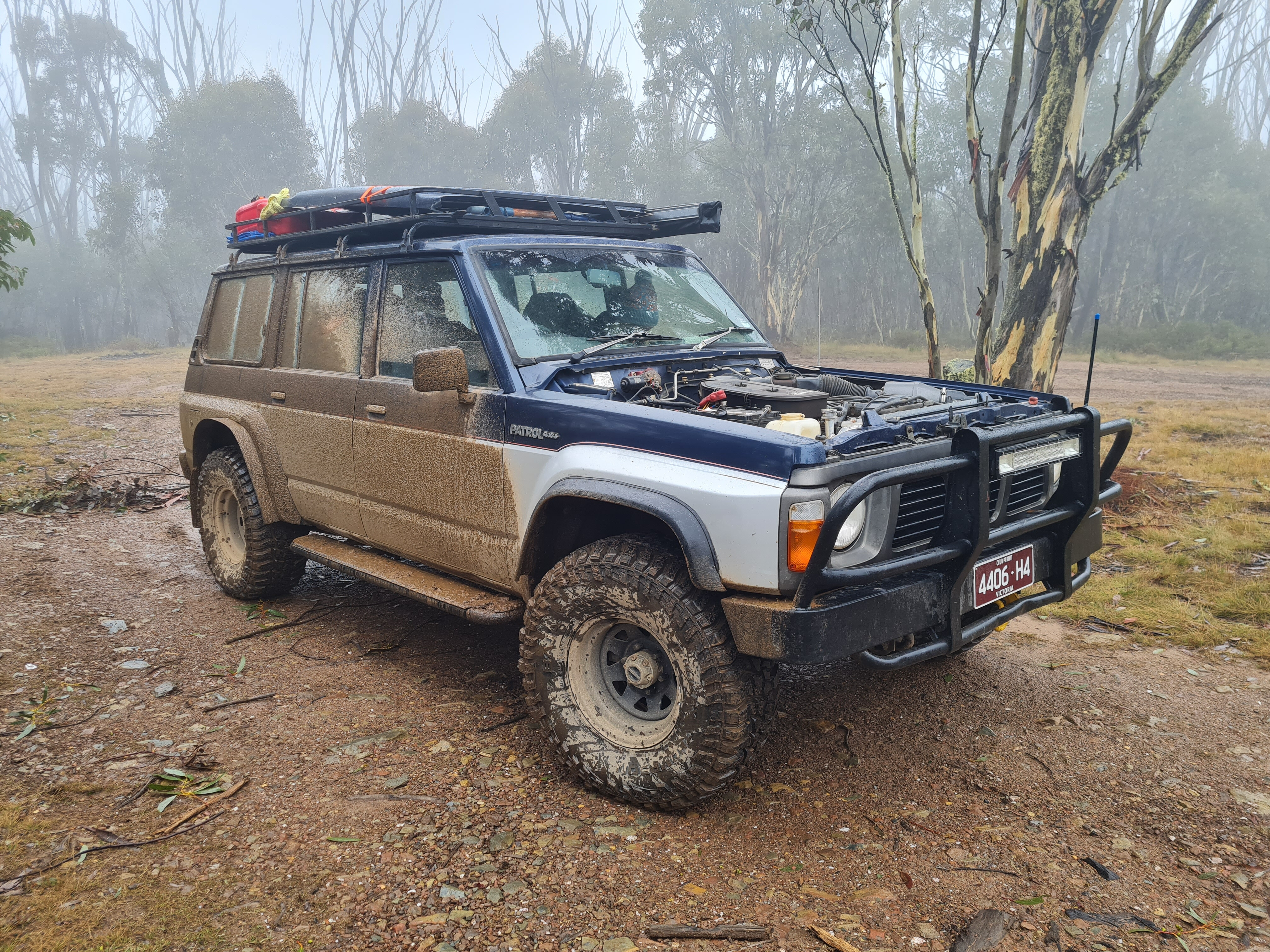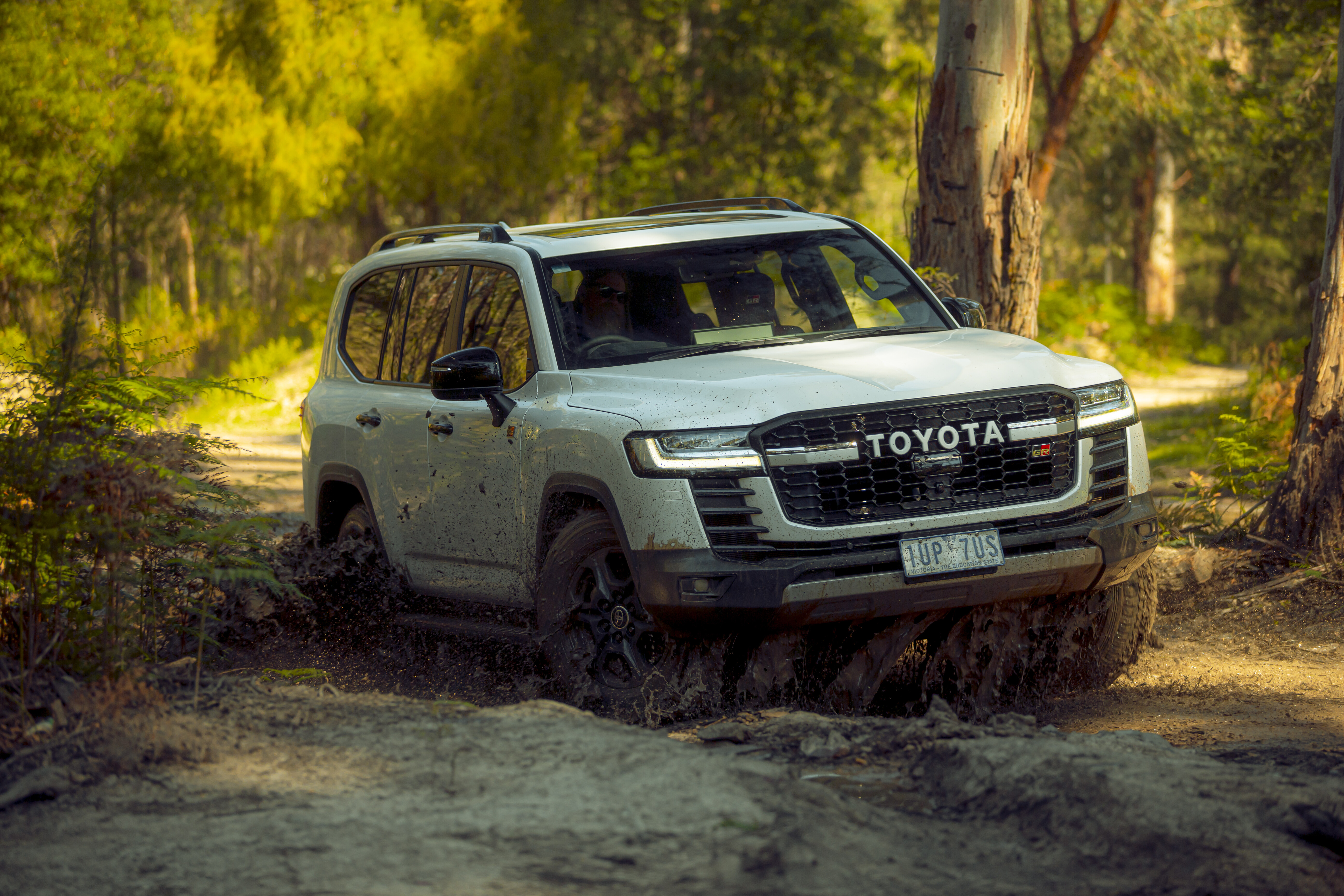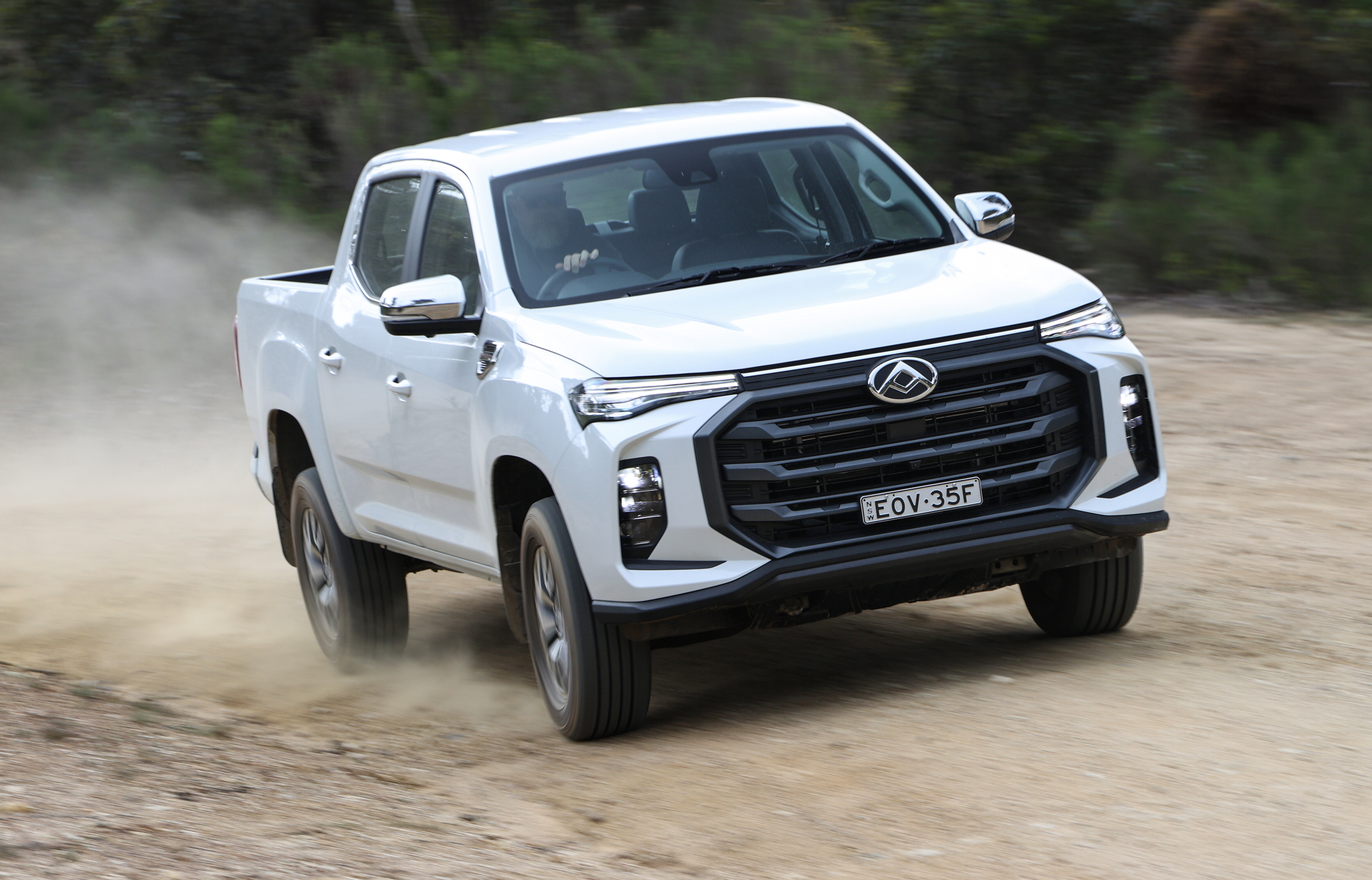If Land Rover stuck to naming tradition this all-new Discovery should be called Discovery 5.
But that’s not the case, it’s simply called Discovery. Regardless, this new Discovery is built on its third different platform since its 1989 debut.
This has seen it evolve from an old-school 4×4, with a separate chassis and live axles at both ends, to a high-tech aluminium-alloy monocoque with fully independent suspension.
Ironically, both the original Discovery and this latest Discovery owe a lot to Range Rovers. But while the first Discovery was based on an almost 25-year-old Range Rover platform, this new Discovery is built on the latest-generation Range Rover that arrived as recently in 2013.
What’s New?
Virtually everything is new compared to the outgoing Discovery with the V6 diesel engine and the eight-speed automatic gearbox being the obvious carry-over items. Most notably this new Discovery brings two new four-cylinder diesels, both 2.0-litres in capacity but in single and bi-turbo configurations.
2017 Land Rover Discovery receives five-star ANCAP safety rating
The single turbo makes 132kw and 430Nm, extraordinarily strong numbers for an engine of that configuration, but it can’t be had with a dual-range transfer case. You’re stuck with single-range 4×4.
The bi-turbo four makes astonishing numbers for a 2.0-litre diesel, with 177kw and 500Nm, and comes with dual range. Given the Discovery 4’s carried over V6 (previously denoted by an ‘SDV6’ badge but now a ‘Td6’ one) makes 13kW and 100Nm more, but brings a $7K price premium, this bi-turbo four could be the popular choice for those who insist on dual-range.
Now, if you are thinking that’s not enough engine for a big car, consider the lightweight aluminium monocoque at the Discovery’s core.
Compared to the Discovery 3/4’s separate-chassis steel platform it weighs significantly less– where the Discovery 4 was north of 2560kg, this new Discovery is around 2110kg with the bi-turbo four-cylinder and 2220Kg with the V6.
Ford Everest vs Land Rover Discovery vs Toyota Prado
This significant weight loss not only helps redress any performance loss going to a four-cylinder engine but it brings better economy, sharper on-road dynamics and improved off-road ability for all-round wins.
The new 2.0-litre bi-turbo four actually claims 22kW more than the out-going TDV6 and only gives away 20Nm in torque, so is no slouch regardless of the weight savings. It also looks especially good against the 140kW/440Nm 2.7 V6 in earlier iterations of the Discovery 4 and in the Discovery 3.
What’s it like to Drive?
Land Rover’s Australia’s launch of the new Discovery around Uluru involved NT’s typically smooth and relatively straight bitumen, some easy sand tracks and a set-piece 4×4 obstacle course. So, a taste but not a comprehensive test … that is yet to come.
The vehicles driven include the bi-turbo four and the V6 fitted with dual-range gearing, which comes standard with these engines except in S spec models. The single-turbo four or models with single-range 4×4 weren’t available to sample.
Driving the bi-turbo four and the V6 back-to-back revealed the four as a brilliant perfomer. Most of the time you wouldn’t know you’re driving it rather than the V6 and pedal-to-metal there’s not much between them.
Benefitting from a 110kg weight advantage over the V6 and slightly shorter final drive gearing (3.31 vs. 3.21), the four only gives away 0.2 of a second to 100km/h (8.3s vs. 8.1s) and nothing in the 80km to 120km/h sprint according to Land Rover specs. On the road it feels like it too. It’s even difficult to split the two on sound.
The similar performance between the Sd4 and the Td6 leaves open the question of Sd6 down the line especially given that Land Rover has a 225kW/700Nm version of the V6 as used in the Range Rover Sport to call upon and the forthcoming inline six-cylinder engine.
Performance aside this new Discovery has very much the poise and refinement of the Range Rover, from which it was born. It’s smooth, quiet, refined and comfortable, almost serene at times.
And it’s much lighter and more agile on its feet that the notably heavier Disco 4. Electric power steering also brings reduced effort at parking speeds but also a positive and reassuring feel at highway speeds.
All the launch vehicles were fitted with height-adjustable air suspension. For off-road driving it allows the ride height to be raised 75mm from the standard ride-height clearance of 208mm up to 283mm and will hold that up to 50km/h if need be. Above 50km/h and below 80km/h it will hold at 40mm above standard ride height.
If the chassis grounds out it will automatically lift an additional 35mm while the driver can raise it again an additional 30mm to the top-out point as a get-out-of-gaol card. Base spec models (not driven) come with coil springs as standard and with 220mm of ground clearance.
The extra ground clearance courtesy of the air suspension was needed at the 4×4 obstacle course, as was the impressive 500mm of wheel travel.
Bucket list: Land Rover Defender Heritage 90
As with the Range Rover and RR Sport family vehicles this is an extremely capable 4×4 platform although one that needs the optional rear locker to give its very best. The locker, available across all models, provided you also have dual-range gearing, is a bargain at $1080. The increased wading depth (900mm, or 850mm with coil springs) of this new Discovery is also more than handy.
What’s it like to sit in?
This new Discovery is very Range Rover Sport-familiar in the layout of the cockpit, controls and switchgear, proving once again the close connection of this Discovery with its up-market cousin.
The cabin isn’t as airy as the Discovery 4 and not as wide or as tall, but it is longer than the Disco 4 and rides off a longer by 35mm wheelbase. Perhaps this lower, narrower and longer body was in part driven by the need for reduced aero drag and hence lower fuel use given today’s preoccupation with fuel efficiency.
As per the Discovery 4 all seven seats can fit 6-foot-plus adults even if the second row doesn’t feel quite as roomy.
The third row space is however impressive and the middle-row seats have fore and aft adjustment to help tailor the second- and third-row space. As with the Discovery 4 all the seats fold individually and on up-spec models power-recline for all the seats is an option.
There’s plenty of luggage space too accessed via a single top-hinged rear door. There’s even a faux interior tailgate to sit on (it will take 300kg), or use as a table, for those who miss the horizontal-split tailgate of the Discovery 3/4.
And the Nitty Gritty…
The Discovery is good news. Very good news. But Land Rover, while changing everything else, hasn’t seriously addressed the two biggest complaints levelled at the Discovery 4 by people who wish to take their Discovery off road, namely fuel-capacity and wheel/tyre specification.
Ford’s influence on the Discovery 3
Remembering that the Discovery 4 diesels had an 82.3-tank, the new Discovery has 77 litres for the four-cylinder models and the 85 litres for the V6, so any fuel-range improvement will have to come through lower fuel use courtesy of the weight savings.
There’s a similar story with the wheel and tyre spec although there’s been a marginal improvement in the critical sidewall height as slightly taller tyres are fitted for any given wheel size.
As before 19s are the smallest factory wheel but where 19s on a Discovery 4 wore 255/55s, 19s on this new Discovery wear 235/65s for a nominal 12.5mm increase in sidewall height. Another way to look at this is 255/55s are now the standard fitment on the 20-inch wheels rather than the 19s.
The fact that the front brake size is consistent cross the range and hasn’t increased from the Discovery 4 means that any variant can be fitted with factory 19s rather than the 20s, which are on most models.
What’s more it appears that fitting bespoke 18s, as was the case with the Discovery 4, is a real possibility.
We look forward to more time behind the wheel of this exciting, interesting and groundbreaking new Discovery…
Australian Range and Pricing* S Td4: $65,950 S Sd4: $71,560 S Td6: $78,271 SE Td4: $77,050 SE Sd4: $83,450 SE Td6: $90,161 HSE Td4: $87,150 HSE Sd4: $93,550 HSE Td6: $100,261 HSE Luxury Td4: $100,950 HSE Luxury Sd4: $107,350 HSE Luxury Td6: $114,061 First Edition Td6: $131,871 *Five seats models (except First Edition). Third-row seating adds between $3,400 (higher-spec models) and $6,400 (lower spec models).
Land Rover Discovery Sd4 Specs Engine: 2.0-litre 4-cyl bi-turbo diesel Max power: 177kW @ 4000rpm Max torque: 500Nm @ 1500rpm Gearbox: eight-speed automatic 4X4 System: dual-range full-time Crawl ratio: 45.7 Construction: aluminium monocoque Front suspension: independent/air springs Rear suspension: independent/air springs Ground clearance*: 283mm Approach angle*: 34 degrees Ramp-over angle*: 27.5 degrees Departure angle*: 30.0 degrees Wading depth*: 900mm Unladen Weight: 2019kg GVM**: 2940kg Payload**: 921kg Max towing capacity: 3500kg Max towball download: 350kg GCM**: 6640kg Fuel tank capacity: 77 litres ADR fuel claim: 6.3 litres/100km *When fitted with height-adjustable air suspension. ** Five-seat model.





